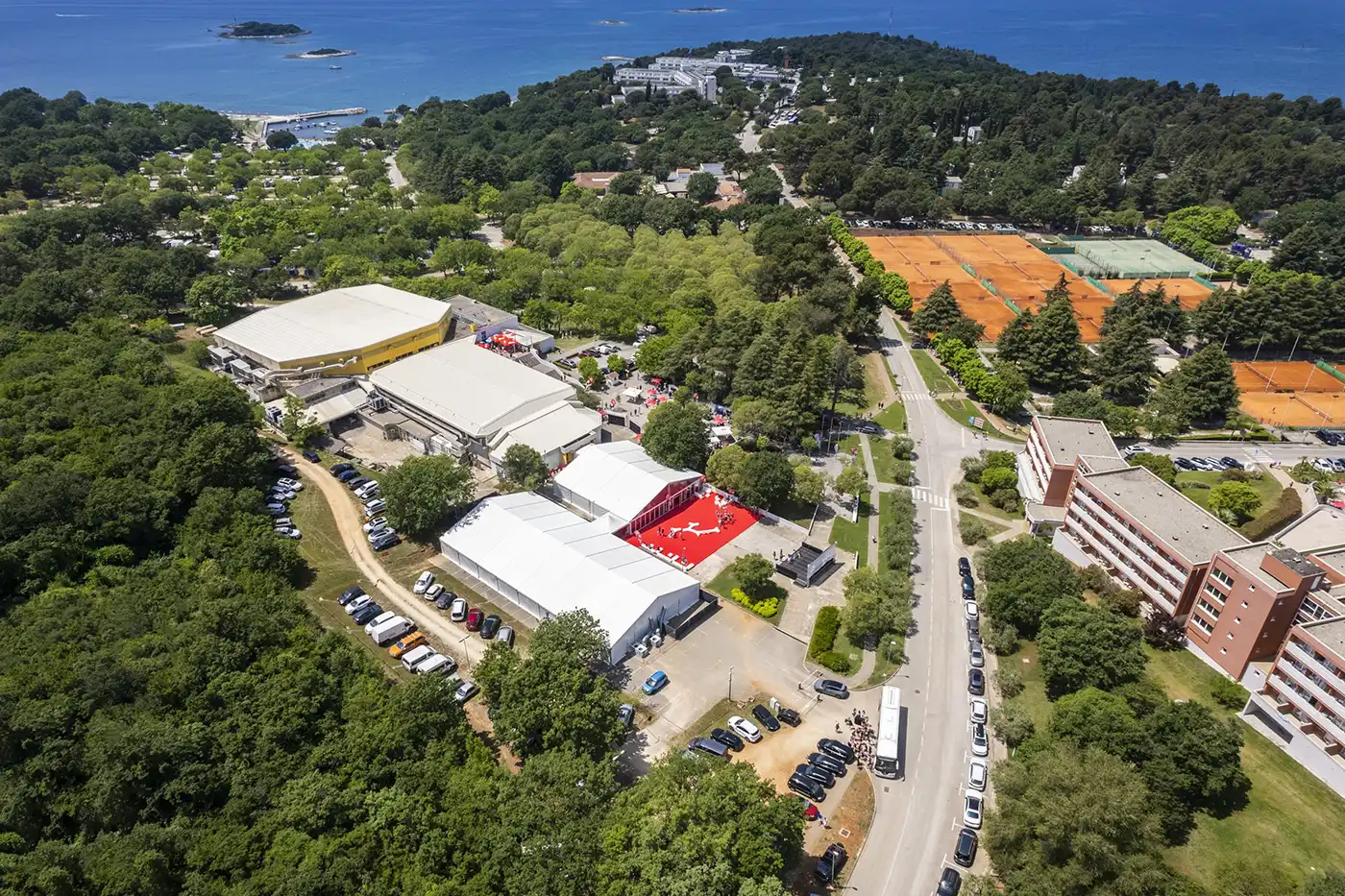3x3 BASKETBALL
TECHNICAL RULES AND REGULATIONS - U15 & U18

GENERAL OVERVIEW
This document ensures that all competition-related aspects are managed in a fair and structured manner. The key objectives of these regulations are:
- Defining the general conditions for participation in ESSG 3X3 Basketball events.
- Establishing delegation composition guidelines.
- Outlining the sport program details.
- Specifying the technical rules.
- Setting the procedures for draws.
- Defining the process for protests and appeals.
Any exception to these rules can be made by the Event Technical 3X3 Basketball Committee (ET3X3BC)
1. GENERAL CONDITIONS
The competition will be conducted in accordance with FIBA technical regulations and overseen by the Event Technical 3X3 Basketball Committee (ET3X3BC). Any variations from FIBA regulations will be outlined in the event bulletin. The competition will follow the latest version of the Official 3x3 Basketball Rules published by FIBA ensuring compliance with age-specific rules and guidelines.
Decisions regarding issues not covered in this document will be determined by the ET3X3BC.
Competition Categories:
- U18: Boys and Girls Categories
- U15: Boys and Girls Categories
Age Eligibility:
- U18: Players born in 2008-2009-2010
- U15: Players born in 2011-2012-2013*
Younger players may be accepted upon approval by the ET3X3BC.
2. SPORT PROGRAM
Events: Boys and Girls Team Competitions
3. TECHNICAL RULES
The competition will adhere to FIBA rules and ensure all teams compete until final rankings are determined.
The competition will follow the latest Official 3x3 Basketball Rules as published by FIBA:
- Game Format:
- A team consists of three players on the court and one substitute.
- The game is played on a half-court with one basket.
- The game duration is one period of 10 minutes playing time.
- The first team to reach 21 points (or more), or the team leading at the end of regular time, wins.
- In case of a tie, overtime is played, and the first team to score two points wins.
- Scoring System:
- Shots made inside the arc (6.75m line) = 1 point.
- Shots made beyond the arc = 2 points.
- Free throws = 1 point.
- Shot Clock:
- Teams must attempt a field goal within 12 seconds.
- Substitutions:
- Allowed only when the ball is dead, and the game clock is stopped.
- Timeouts:
- Each team is granted one 30-second timeout.
- There are also two technical timeouts (after 3 and 6 minutes of playing time).
- Fouls and Penalties:
- 7th, 8th, and 9th team fouls → Opponents receive two free throws.
- 10th team foul and beyond → Opponents receive two free throws and ball possession.
- Players are not excluded based on personal fouls.
- A player committing two unsportsmanlike fouls will be disqualified.
- Forfeit and Default:
- A team loses by forfeit if it does not have at least three players ready at game time.
- A team loses by default if it leaves the court before the end of the game or if all players are disqualified/injured.
- Ranking Criteria:
- Most wins (or win ratio)
- Head-to-head results (in pool stage)
- Most points scored per game (capped at 21 points per game for ranking)
- If still tied, teams are ranked by seeding.
1. Competition Format:
The tournament consists of two phases:
Phase 1: Round-Robin Stage
- All teams will participate in a round-robin format, where each team plays against every other team once.
- After all matches are completed, teams will be ranked based on their performance (points, goal difference, or other tiebreakers).
- The rankings from this phase will determine the placement of teams into divisions for the knockout phase.
Phase 2: Knockout Stage (Divisional Playoffs)
- Based on their round-robin rankings, teams will be divided into divisions.
- The number of teams per division will depend on the total number of participating teams.
- Each division will follow a knockout format, where teams compete in elimination matches.
Note:
- If the total number of participating teams is too low to apply this system effectively, the Organizing Committee will decide on an alternative tournament format to ensure fair and competitive play.
2. Divisional Breakdown & Knockout Format
After the round-robin phase, teams will be divided as follows:
Champion Division (Top-tier teams)
- The highest-ranked teams from the round-robin phase will compete for the overall championship.
- The top three teams in this division will receive gold, silver, and bronze medals.
Division 2 (Mid-tier teams) (Gold star division)
- The next set of ranked teams will compete for Division 2 honors.
- The top three teams in this division will receive gold, silver, and bronze medals.
Divison 3, 4 etc.
- If the number of teams allows, more divisions will be created to ensure fair competition.
3. Medal Distribution
- Each division awards gold, silver, and bronze medals to the top three finishing teams.
- This ensures recognition for performance across all competition levels, not just the top-ranked teams.
4. Ranking & Adjustments
- The exact number of teams per division will depend on the total number of participating teams.
- Tournament organizers may adjust brackets if needed to ensure fair competition (e.g., adding placement matches if there is an uneven number of teams).
5. Purpose of the System
This structure guarantees that:
- All teams get multiple matches through the round-robin phase.
- Each team remains engaged in the competition, regardless of early results.
- Competitive balance is maintained, as teams face others at a similar level in the knockout phase.
- Medals are awarded across multiple levels, making the tournament more inclusive and rewarding.
- The playing system and final competition schedule will align with sports traditions.
- The format depends on the total number of registered teams and will be outlined post-registration. Possible competition formats include: (1) Group Stage with Knockout Rounds, or (2) Single Round-Robin, depending on the number of teams.
- The final format will be confirmed after registration.
4. DELEGATION COMPOSITION
Each delegation must include:
- Head of Delegation (HOD) (Mandatory)
- Players (Mandatory)
- Team Officials (Mandatory)
- Field of Play Officials (Referees) (Optional)
- Additional Adults (Optional)
Head of Delegation (HOD)
Each delegation must appoint a single head, who serves as the main liaison between the delegation and the Organizing Committee (OC).
Players
- All participants must be students.
- Only accredited players from the official team list may compete.
- Each team must consist of a minimum of 3 players.
Team Officials
- Coaches:
- Every team must have at least one coach.
- Teams cannot compete without a designated coach.
- Other Team Officials:
- Roles may include doctors, trainers, physiotherapists, statisticians, and team managers.
- Not mandatory but must be specified during registration.
- Any unregistered persons will not be considered part of the official team.
Field of Play Officials
- Each team may provide at least one FIBA or nationally licensed 3x3 referee
- If insufficient referees are available, the Organizing Committee will appoint officials.
- Referees must present certification during registration.
Additional Adults
- Roles may include interpreters, security staff, media personnel etc.
- Additional adults are optional and must be specified during registration.
Unregistered individuals will not receive accreditation.
5. DRAW PROCEDURE
- The ET3X3BC determines the criteria and scheduling for the draw.
- The draw will be conducted fairly and transparently, with all registered teams randomly assigned to groups.
- If the total number of teams does not allow for equal group distribution, adjustments will be made to ensure a balanced competition format.
- If an odd number of teams are registered, the ET3X3BC may create groups of different sizes while ensuring fairness in match distribution.
- The draw process will be overseen by the Event Technical 3X3 Basketball Committee (ET3X3BC) to guarantee neutrality
- Once the draw is completed, the final group placements will be published and communicated to all teams.
Any unforeseen issues related to the draw will be resolved by the ET3X3BC before the competition begins.
6. PROTESTS AND APPEALS
Protests must comply with FIBA 3x3 Basketball Rules.
Protests may be filed in case of:
- Errors in scorekeeping, timekeeping, or shot clock operations.
- Decisions related to forfeits, cancellations, or eligibility violations.
Protest procedure:
- A player from the protesting team must sign the scoresheet immediately after the game.
- A written explanation must be provided on the reverse side of the scoresheet (in English).
- A protest fee of 100 € must be submitted in cash to the ET3X3BC.
If the protest is upheld, the fee is refunded; otherwise, it is retained by the ESSG.
3x3 BASKETBALL - Provisional program
| Courts | day | Schedule |
|---|---|---|
| Outdoor | 25 March Wednesday | arrival - training |
| Outdoor | 26 March Thursday | 9:00-17:00 |
| Outdoor | 27 March Friday | 9:00-17:00 |
The program is subject to change depending on the number of registered teams.
VENUES INFORMATION
POREČ
ZELENA RESORT MULTIFUNCTIONAL INTERSPORT COMPLEX
The multifunctional Intersport complex located in the Zelena Resort consists of two sport halls, dressing rooms, and stands.


